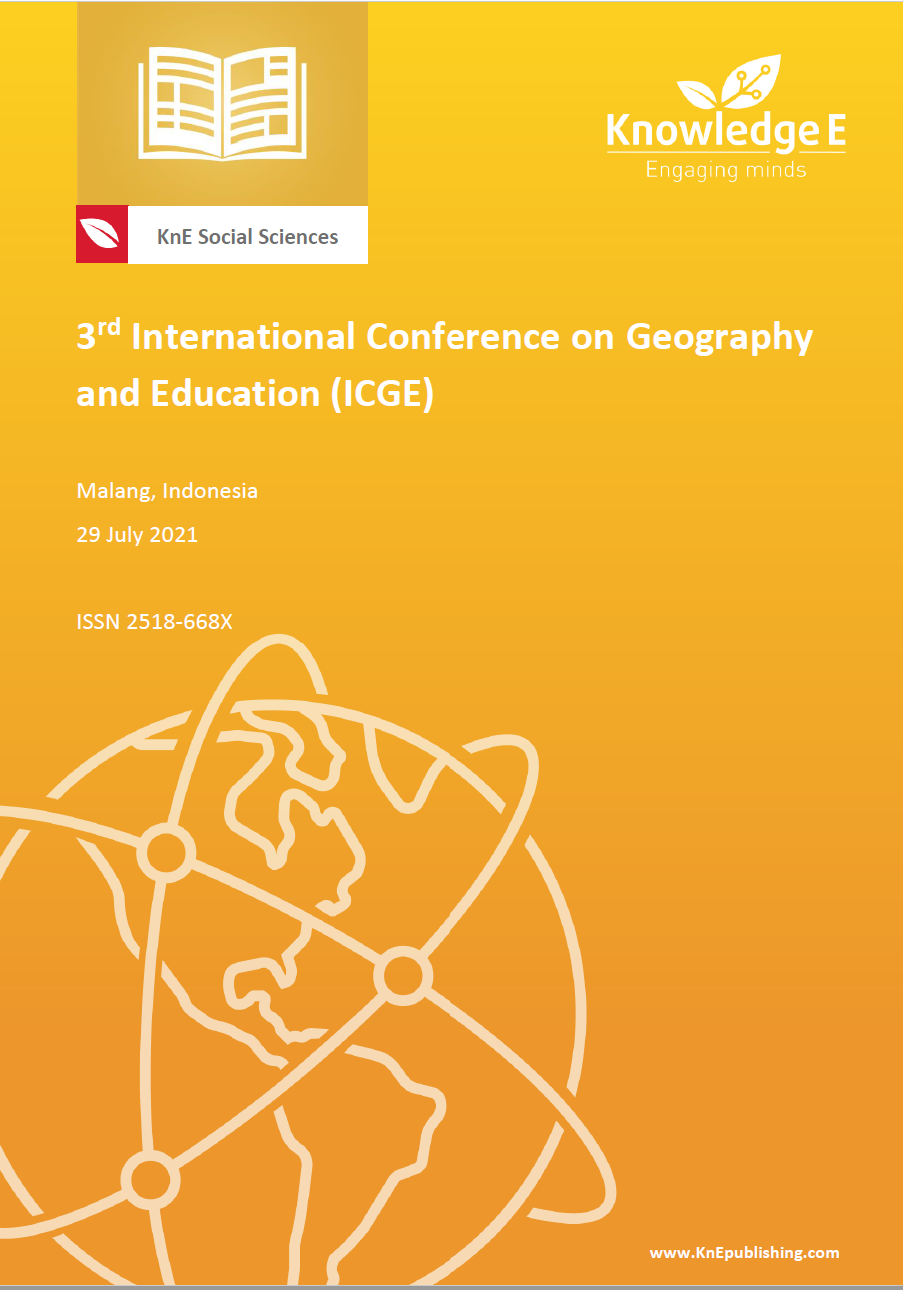Use of Karst Caves in Malang Regency and the Possible Challenges to Their Existence
DOI:
https://doi.org/10.18502/kss.v7i16.12187Abstract
The karst landscape is in the southern part of Malang Regency. In this area, separate phenomena can be seen on the surface (eksokarst) and subsurface (endokarst). The eksokarst landscape is indicated by an arid/dry area; meanwhile the endokarst landscape is indicated by the presence of caves. This study aimed to understand the use of the karst caves by the people in Malang Regency, the existing potential inside the cave passages, and the future challenges to their utilization. The study used field observation along the cave sites. Based on the data obtained, the caves in the Malang area are used to obtain clean water from the subterranean rivers, as well as for religious purposes, and as cultural heritage sites for educative tourism. Caves also play an important role in carbon gas absorption. However, many caves have not been optimally utilized by the Malang people. The possible challenges which will be faced in developing cave tourism are as follows: visitor activities in sensitive areas that lead to cave damage; a lack of awareness about the existence of certain high-potential caves, which require skilled researchers to identify; and cave tourist attraction development that raises environmental concerns.
Keywords: karst, caves, utilization, existence
References
Haryono E, Adjie TN. Geomorfologi dan hidrologi karst. Yogyakarta: Kelompok Studi Karst Fakultas Geografi Universitas Gadjah Mada; 2004.
Impala UB. Studi potensi kawasan karst inventarisasi dan pendataan ponor, mata air, dan telaga/danau karst serta pemetaan fauna gua dan studi masyarakat di desa kedungsalam, kecamatan donomulyo, kabupaten Malang. Laporan akhir. Malang: Universitas Brawijaya; 2012.
Fauzi I, Baihaqi MR, Dewi Mar’a KT, Eko A. Laporan pendataan gua, mata air dan telaga di karst Malang selatan desa Bandung rejo dan desa sumber bening kecamatan bantur kabupaten Malang. Laporan akhir. Surabaya:UIN Sunan Ampel Surabaya;2015.
Labib MA. Speleogeomorfologi karst di kecamatan donomulyo kabupaten Malang [Thesis tidak diterbitkan]. Yogyakarta: Program Pascasarjana Fakultas Geografi Universitas Gadjah Mada; 2016.
Suprianto A, Prasetyono D, Hardianto AS et al. Identifikasi hubungan kelurusan dan pola lorong gua karst di kecamatan sumbermanjing wetan kabupaten Malang. Prosiding Seminar Nasional Geotik [Internet]; 2017 Jun 7; Universitas Muhammadiyah Surakarta, Indonesia. Lembaga Ilmu Pengetahuan Indonesia; 2017 [citied 2021 May 3] 30 p. Available from: https://publikasiilmiah.ums.ac.id/xmlui/bitstream/handle/ 11617/9076/geotik2017_3.pdf?sequence=1&isAllowed=y
Salaka MPAJ. Eksplorasi kawasan karst sendang biru kabupaten Malang. Malang: CV Komojoyo Press; 2018.
Sahrina A, Fitrianti D, Suprianto A, Labib MA. Potential and challenges of karst water resources in Sumbermanjing Wetan district of Malang regency. International Conference on Geography and Education[Internet];2019 Oct 10;Malang, Indonesia. IOP Conf. Series: Earth and Environmental Science; 2020 [citied 2018 Jun 4] 1p. Available from: https://iopscience.iop.org/article/10.1088/1755-1315/412/1/012032
Laksamana EE. Stasiun nol: Teknik-teknik pemetaan dan survey hidrologi gua. Yogyakarta: Megalith Books dan Acintyacunyata Speleogenesis Club; 2005.
Haryono E, Labib MA. Pedoman praktis survei terintegrasi kawasan karst. Yogyakarta: Badan Penerbit Fakultas Geografi (BPFG); 2016. Identifikasi morfologi lorong gua di kawasan karst.
Rahmadi C, Wiantoro S, Nugroho H. Sejarah alam gunung sewu. Jakarta: Lembaga Ilmu Pengetahuan Indonesia Press; 2018.
Nurani IA. Karakter budaya gua kidang hunian prasejarah kawasan karst pengunungan utara Jawa. Berkala Arkeologi Sangkhakala, 2016;19(1), 1-16.
Mijiarto J, Sunarminto T, Hermawan R. Potensi dan pemanfaatan jasa lingkungan kawasan karst gua gudawang. Media Konservasi. 2014;19(1), 57–6.
Goldscheider N. A holistic approach to groundwater protection and ecosystem services in karst terrains. Carbonates and Evaporites. 34(4), 1241–1249.
Gillieson D. Caves: Processes, development, and management. UK: Blackwell Publishers; 1996.
Cahyadi HS. Wisata gua: Perencanaan, pengembangan, dan pengelolaan gua wisata berkelanjutan. Yogyakarta: Expert; 2018.

